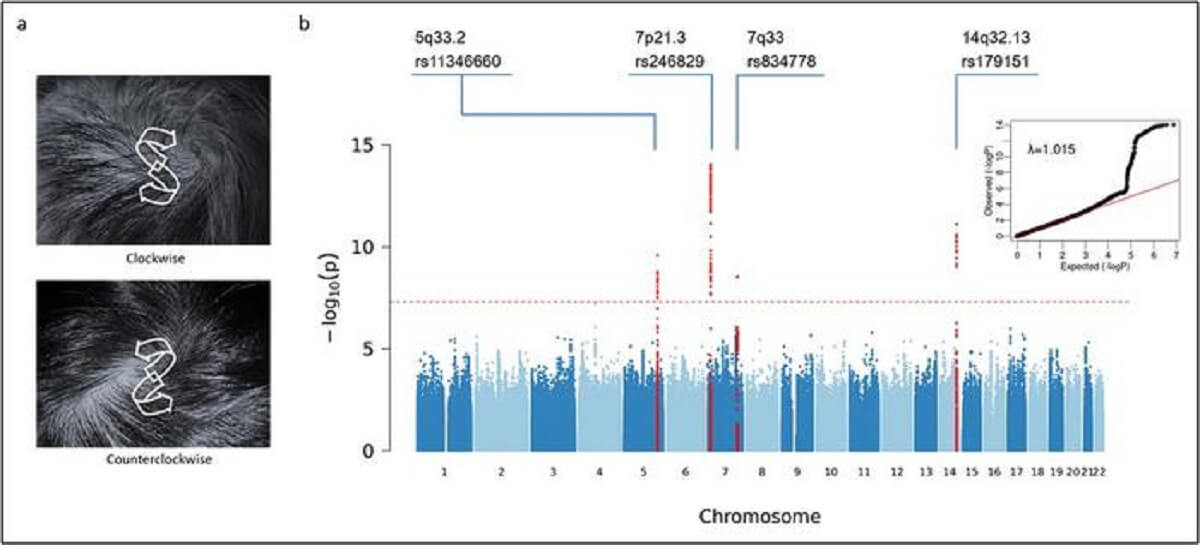PHILADELPHIA — Bad hair days might have more to do with a rare genetic mutation than your locks not cooperating with your comb! A new study finds that this mutation affects follicle formation and shape. The patterns of our hair are influenced by “whorls” – patches that grow in a circular pattern around a specific point. Scientists have now identified four genetic variants that modify their appearance.
The center of the whorl is determined by the orientation of hair follicles, making these patterns distinct from one individual to another. Commonly, these patterns are categorized based on the number of whorls — either single or double — and their direction, which can be either clockwise or counterclockwise.
“We know very little about why we look like we do,” says Dr. Sijia Wang, the lead researcher from the Shanghai Institute of Nutrition and Health at the Chinese Academy of Sciences, in a media release. “Our group has been looking for the genes underlying various interesting traits of physical appearance, including fingerprint patterns, eyebrow thickness, earlobe shape, and hair curliness.”
Some unusual whorl patterns have been observed in individuals with irregular neurological development, prompting experts to delve into the genetics behind our physical appearance.

(credit: Journal of Investigative Dermatology)
“Hair whorl is one of the traits that we were curious about. The prevailing opinion was that hair whorl direction is controlled by a single gene, exhibiting Mendelian inheritance. However, our results demonstrate that hair whorl direction is influenced by the cumulative effects of multiple genes, suggesting a polygenic inheritance,” adds. Dr. Wang.
Genetic variations at 7p21.3, 5q33.2, 7q33, and 14q32.13 affect the direction of hair whorls by altering the shape of hair follicles. The research team also noted that the trends in hair might be influenced by the closure and growth of the cranial neural tube.
“While previous work proposed the hypothesis of associations between hair whorl patterns and abnormal neurological development, no significant genetic associations were observed between hair whorl direction and behavioral, cognitive, or neurological phenotypes,” says Dr. Wang. “Although we still know very little about why we look like we do, we are confident that curiosity will eventually drive us to the answers.”
For this research, the team examined the whorls on the scalps of 2,149 Chinese individuals and expanded their study to include an additional 1,950 Chinese nationals.
The study is published in the Journal of Investigative Dermatology.
You might also be interested in:
- Best Of The Best Hair Gels: Top 5 Sculpting Products Most Recommended By Experts
- Best Of The Best Hair Brushes For 2023: Top 5 Products Most Recommended By Style Experts
- Best Men’s Hairstyles In 2023: Top 5 Looks Most Recommended By Experts
- Best Women’s Hairstyles In 2023: Top 5 Trending Cuts Most Recommended By Stylists
South West News Service writer Pol Allingham contributed to this report.

